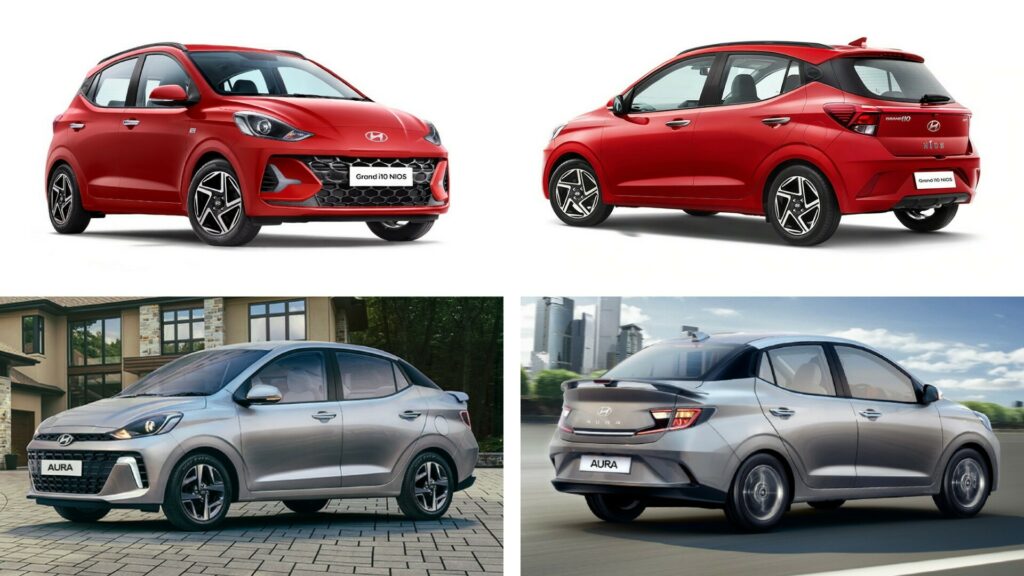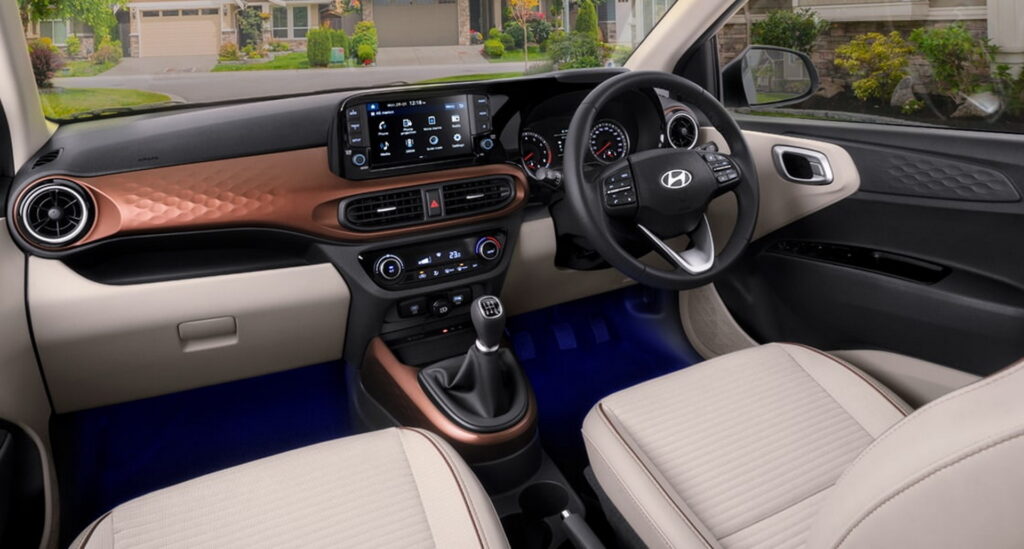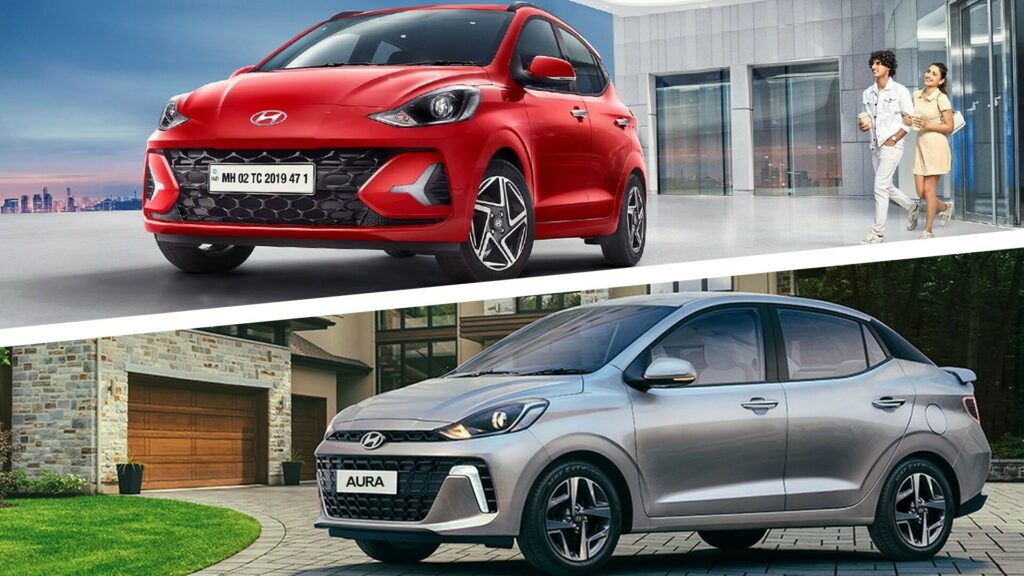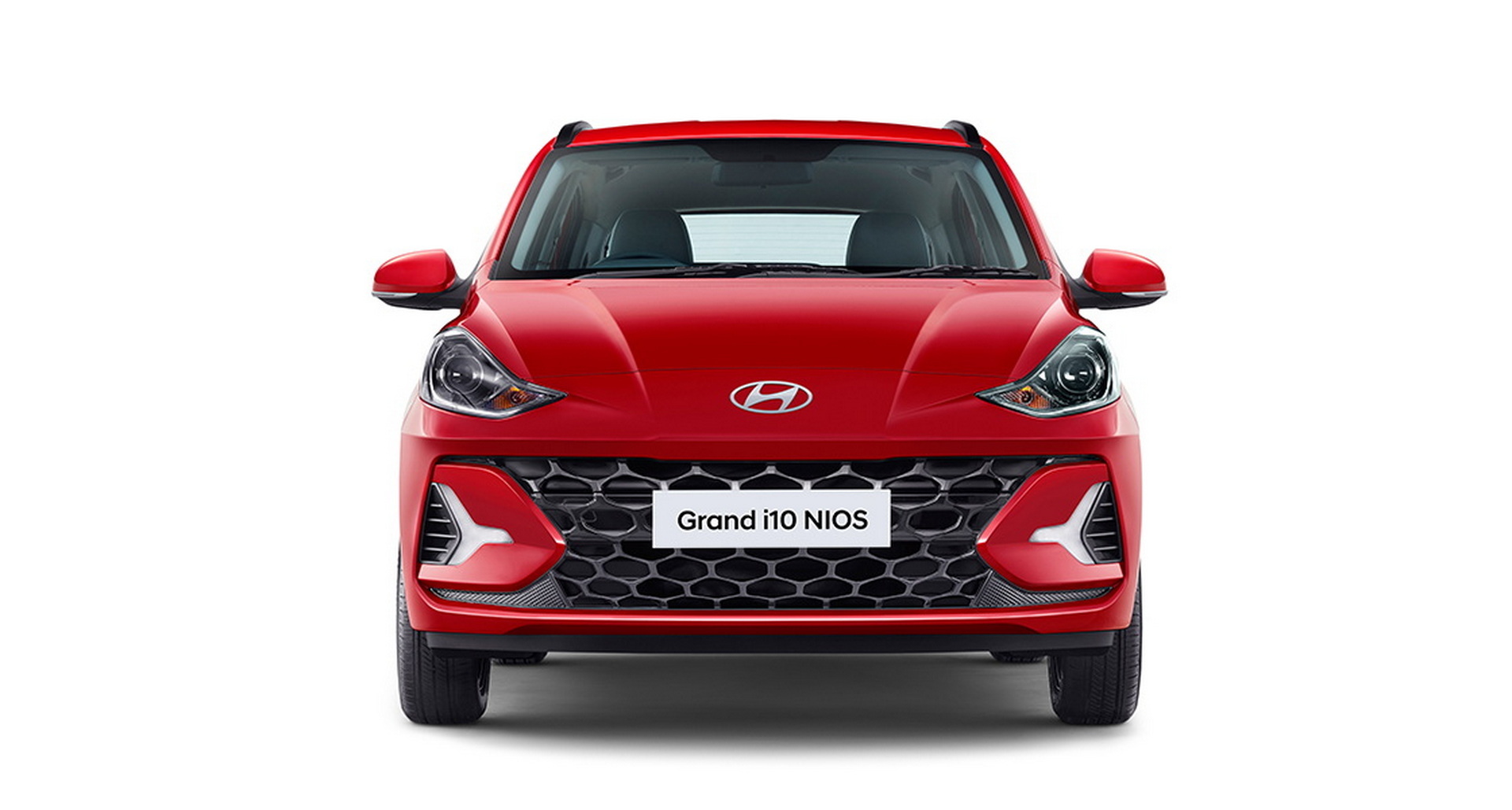Hyundai unveiled the facelifted i10 family in India, including the Grand i10 Nios hatchback and the Aura sedan. The mechanically-related models benefit from visual updates allowing for greater differentiation between them, more tech features, and carry-over powertrains with the exception of the turbocharged 1.0-liter that has been discontinued from the range.
The Hyundai Grand i10 Nios was introduced in 2019 with the Aura sedan following in 2020, which makes 2023 the perfect time for a mid-lifecycle update. Note that Hyundai will soon facelift the European i10 which is very similar but slightly smaller than the Grand i10 Nios.
Read: Hyundai i10 Facelift Spied, Proving There Is Still Time For ICE-Powered City Cars

The Indian-spec models used to look like twins but now each one adopts a distinct style thanks to their redesigned bumpers. The Grand i10 Nios retains the grille-less nose with a larger bumper intake that extends to the sides and a new pair of DRLs on the side inlets. The Aura’s bumper intake also grew larger, connecting to the side inlets with unique DRLs, but it also gained a slim grille between the headlights reminiscent of the larger HB20S from Latin America.
The profile of the models remains identical, since the sculpted bodywork still looks quite modern. At the back, the Grand i10 Nios features an LED strip and updated taillight graphics, while the Aura looks pretty much the same, retaining its signature spoiler.

Interior updates are limited to new upholstery options and additional features including a wireless charging pad, USB-C ports, and a 3.5-inch display between the analog gauges on the instrument cluster. The 8-inch infotainment touchscreen is carried over from the outgoing models, as with the rear climate vents. More importantly, both the Grand i10 Nios and the Aura come standard with four airbags (instead of two), with six airbags on higher trims. They also get auto headlights, keyless entry, rear-view camera rear parking sensors, ABS, and ESC, but don’t expect any fancy ADAS.
In terms of powertrains, both the Grand i10 Nios and the Aura are available with the same naturally aspirated 1.2-liter Kappa four-cylinder petrol engine producing 82 hp (61kW/ 83 PS) and 114 Nm (84 lb-ft) of torque. There is also the option of a bi-fuel 1.2-liter engine running on petrol and CNG, that produces 68 hp (50.5 kW / 69 PS) and 95 Nm (70 lb-ft) of torque. Power is transmitted to the front axle through either a five-speed manual or an automatic transmission, with the bi-fuel engine being manual-only. Unfortunately, Hyundai discontinued the more powerful turbocharged 1.0-liter TGDi petrol engine.
The updated Hyundai Grand i10 Nios and Aura are already available to pre-order in India. The automaker didn’t disclose pricing but local media suggest a starting price of Rs 6 lakh ($7,339) for the hatchback, and Rs 6.5 lakh ($7,951) for the sedan. The upcoming facelifted EU-spec Hyundai i10 is expected to be more expensive, due to the more extensive equipment.



























































